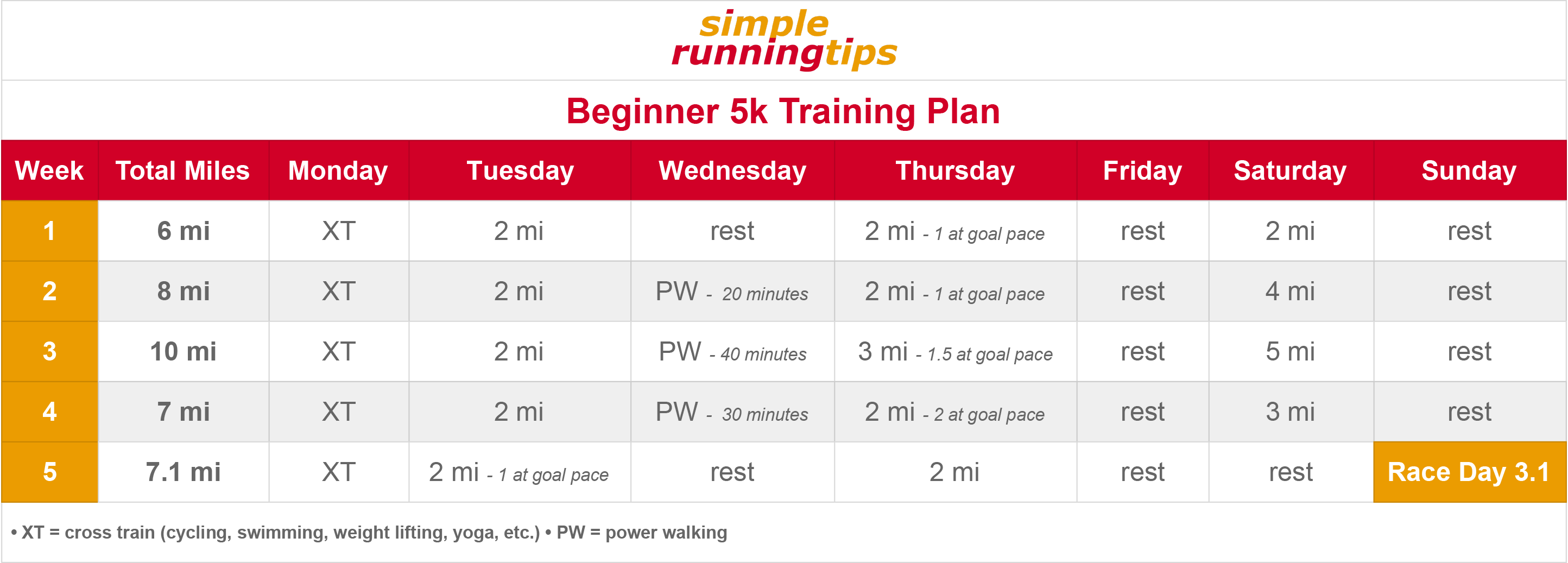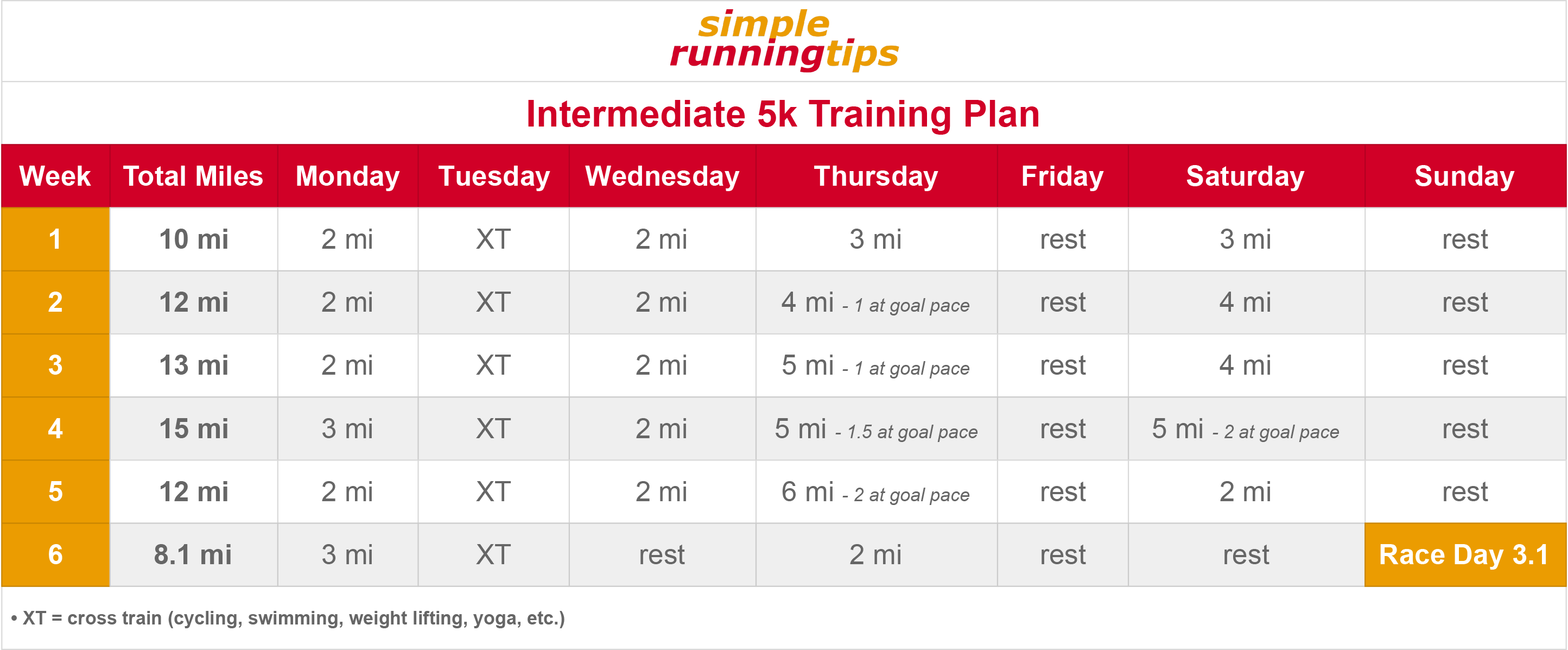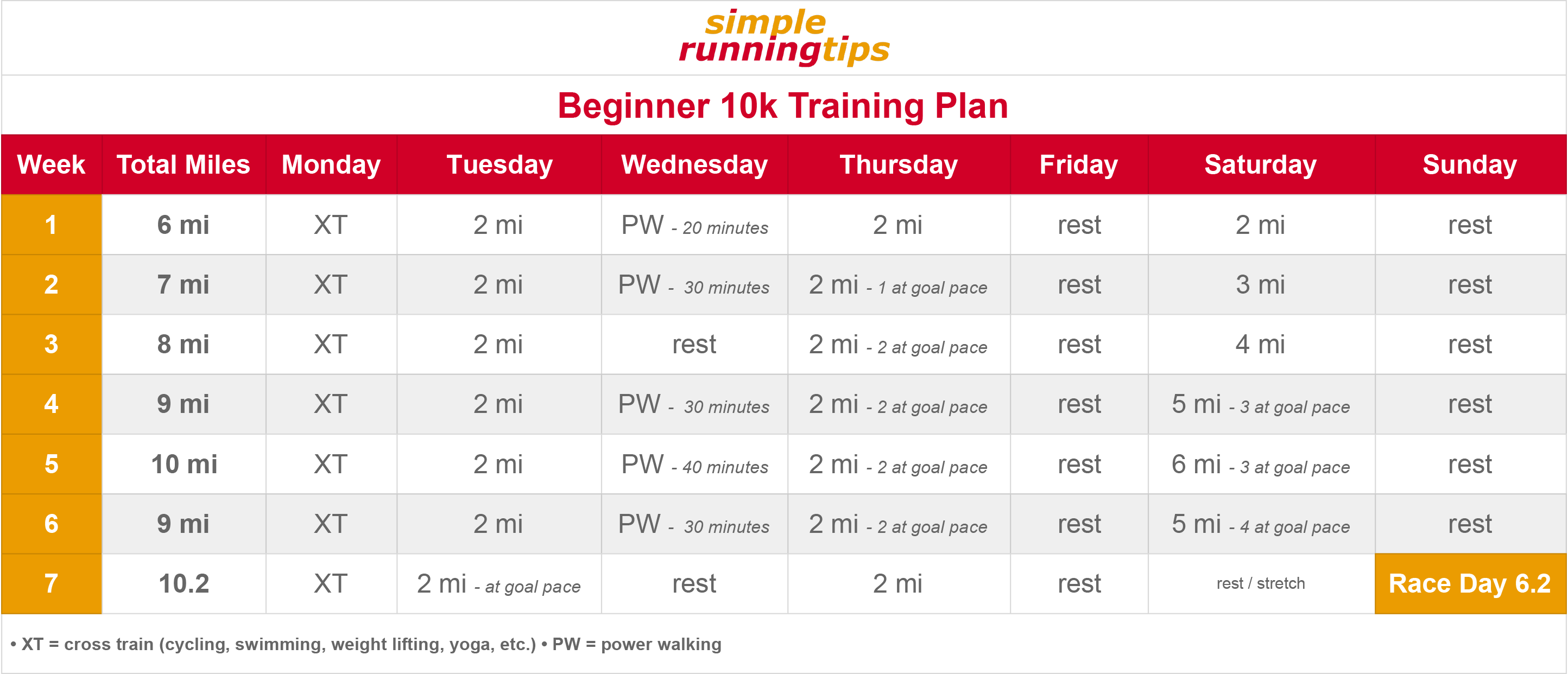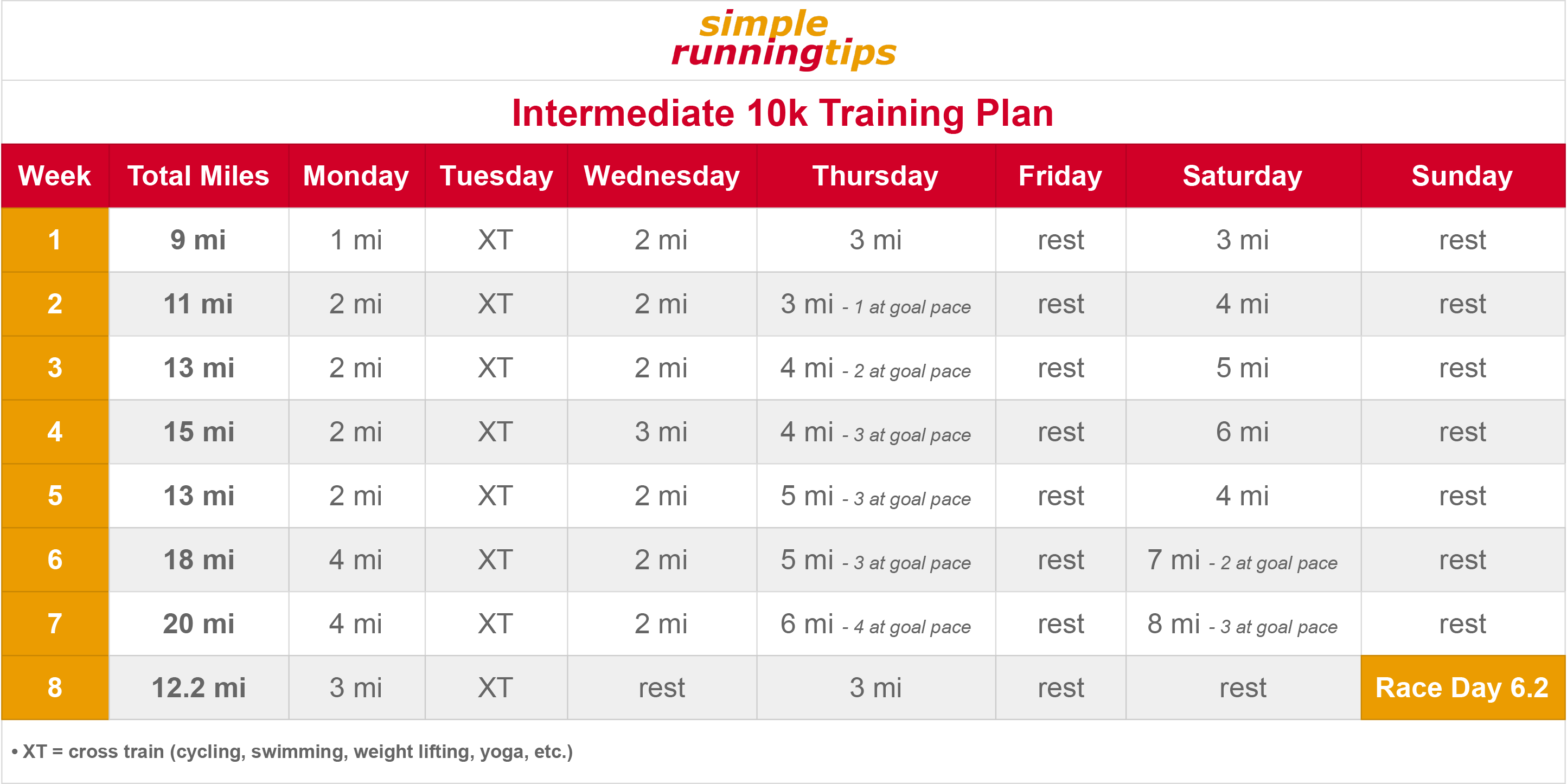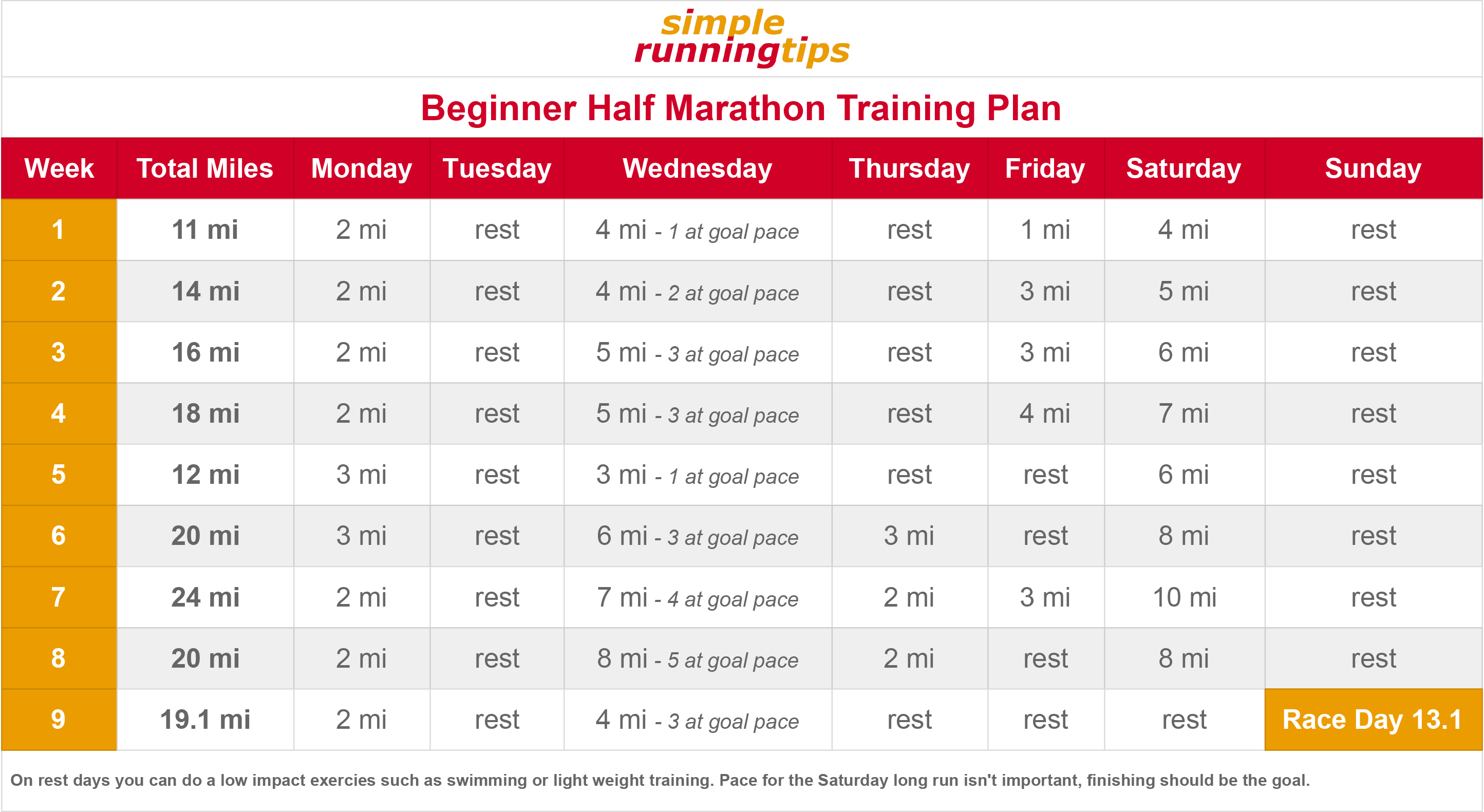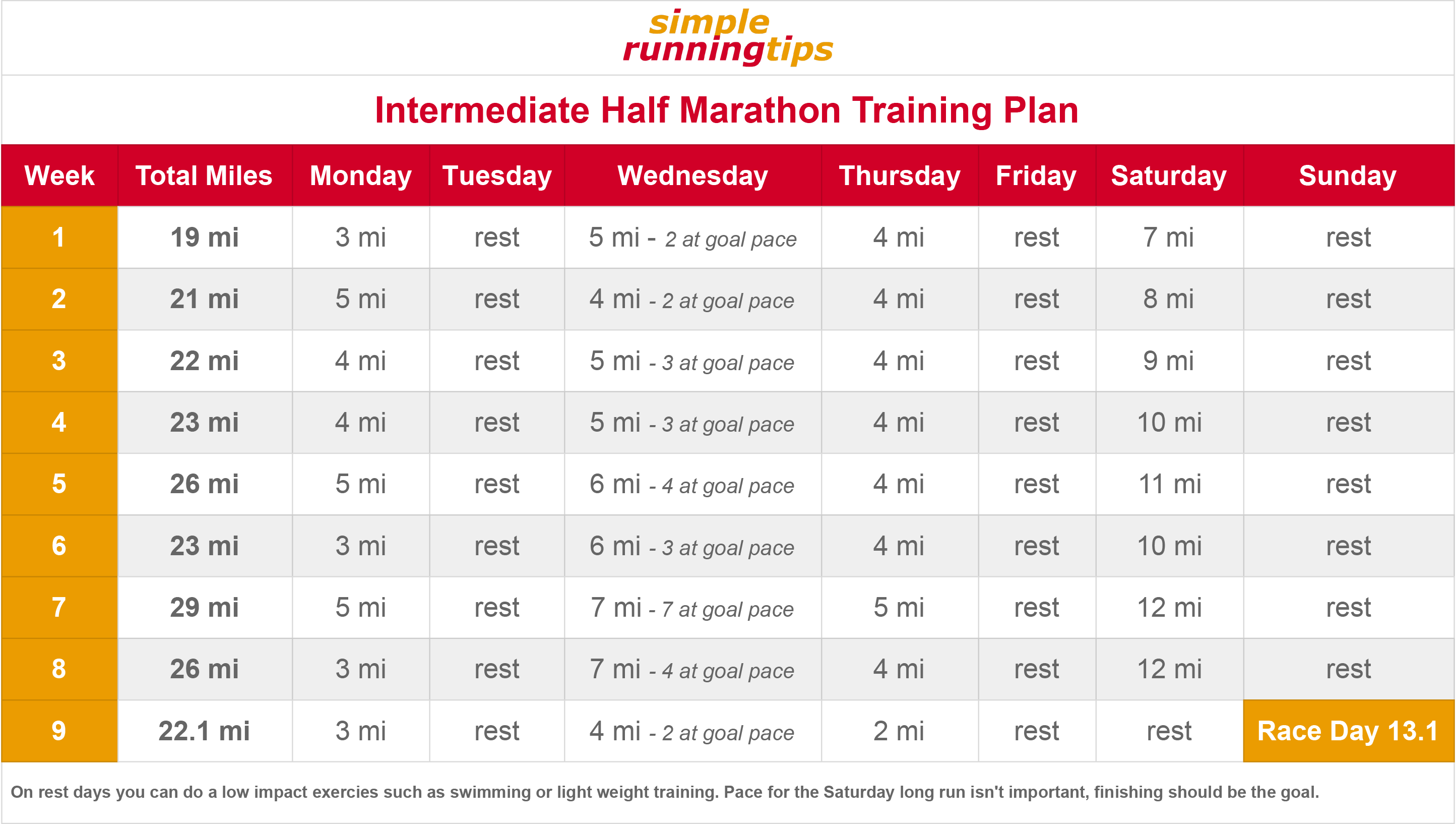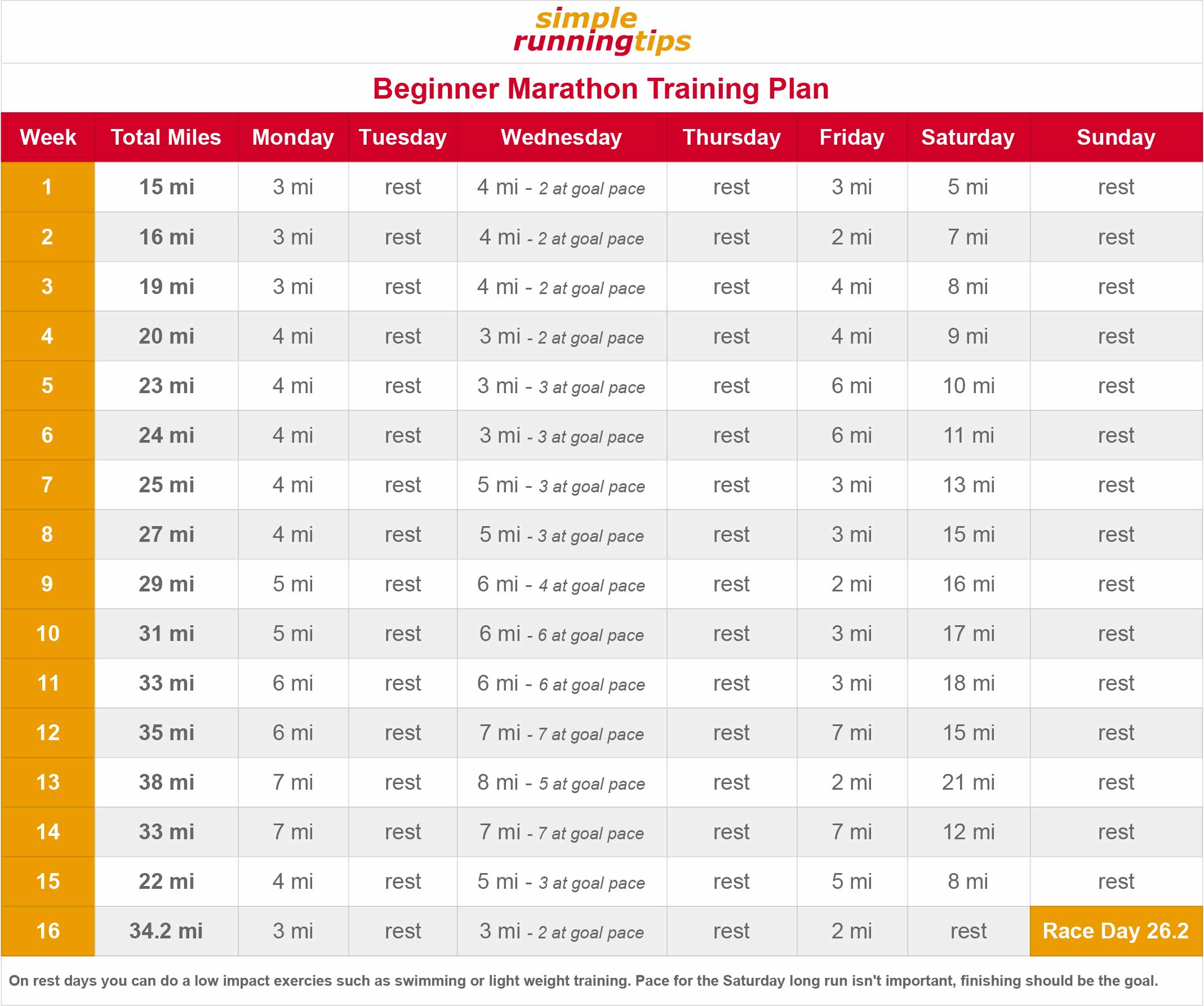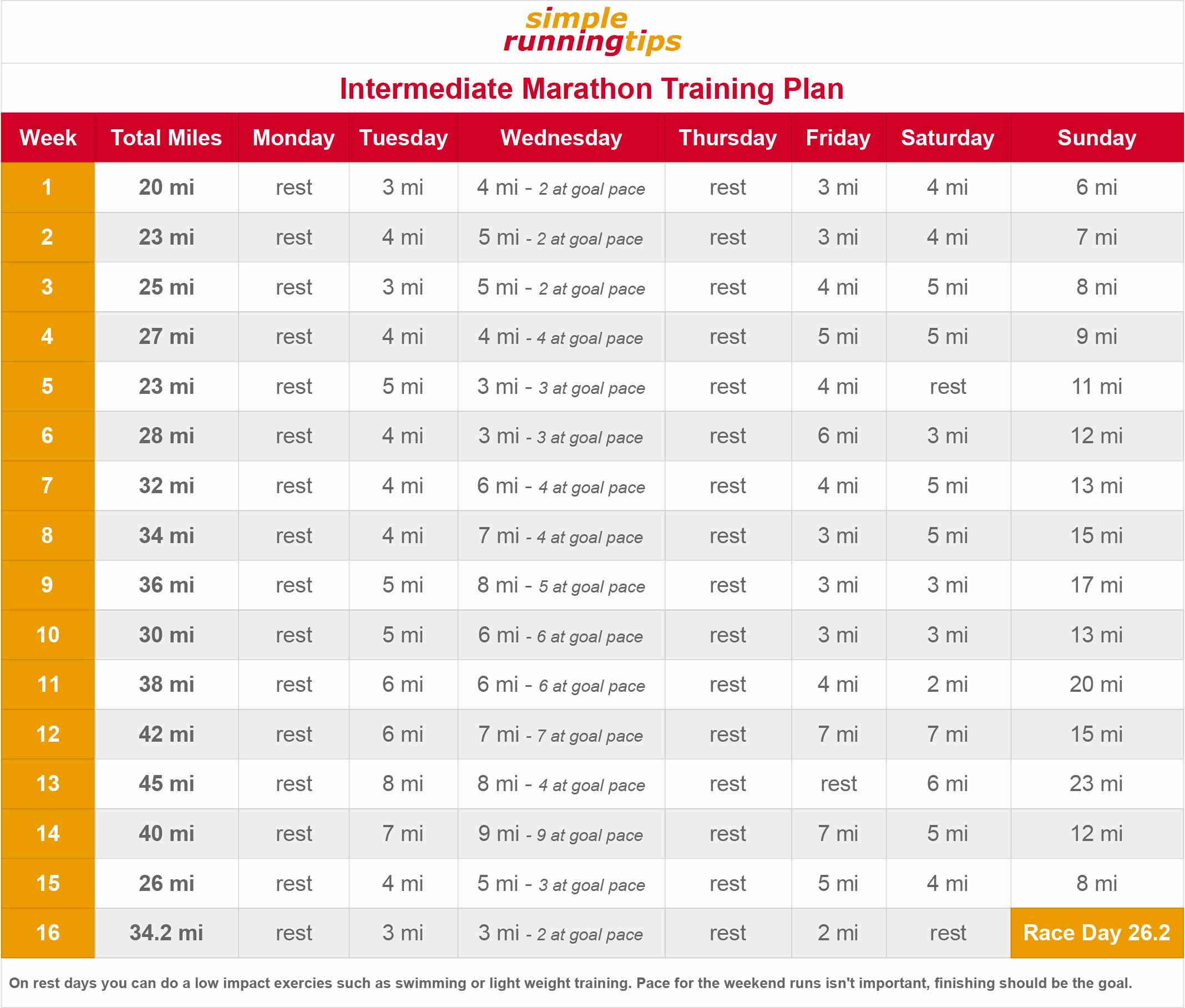Tips for Following the Training Plans
- Feel free to customize the plan to fit your schedule. For example, if you want to do the long runs on Sunday instead of Saturday, that’s fine. Just move the whole schedule ahead one day.
- Be safe. Stay hydrated, use sunblock, and don’t listen to music when you’re in busy areas.
- Aim to complete all training runs. I could have made these plans with more mileage and more speed work, but I didn’t because I want it to be realistic for someone to complete them in full. Only miss a run if you have a valid excuse, like an illness for example.
- Set a goal pace before you start.
- Don’t take breaks during runs unless you have to.
- If you can’t complete a run, try mixing in power walking. It’s definitely better than quitting.
- Finishing the long Saturday runs should be the goal, speed isn’t as important. Find a pace that is challenging but doable.
- Longer runs are going to require fueling. I try to eat something after at lease every hour of running. Gels or granola bars work well.
- If you don’t always hit your goal pace on your speed work runs, it’s okay. But if you are consistently missing it by 30 seconds per mile or more, you might want to reevaluate and set a new goal pace.
- Always stretch before and after any run (dynamic stretch before and static stretch after). The last thing you want is an injury to derail your training plan.
- On rest days you can do low impact exercise such as swimming or light weight training. It’s a good idea to try and do at least one non-running workout a week.
- If you want to run other races during training that’s fine. It’s good because you will push yourself the hardest in an organized race. For example, a half marathon during your full marathon training can be beneficial. Just use your best judgment to appropriately work it into your plan.
- The plans assume the race day is on Sunday, if your race is on Saturday you should use your best judgment to update the final week of your training plan.

